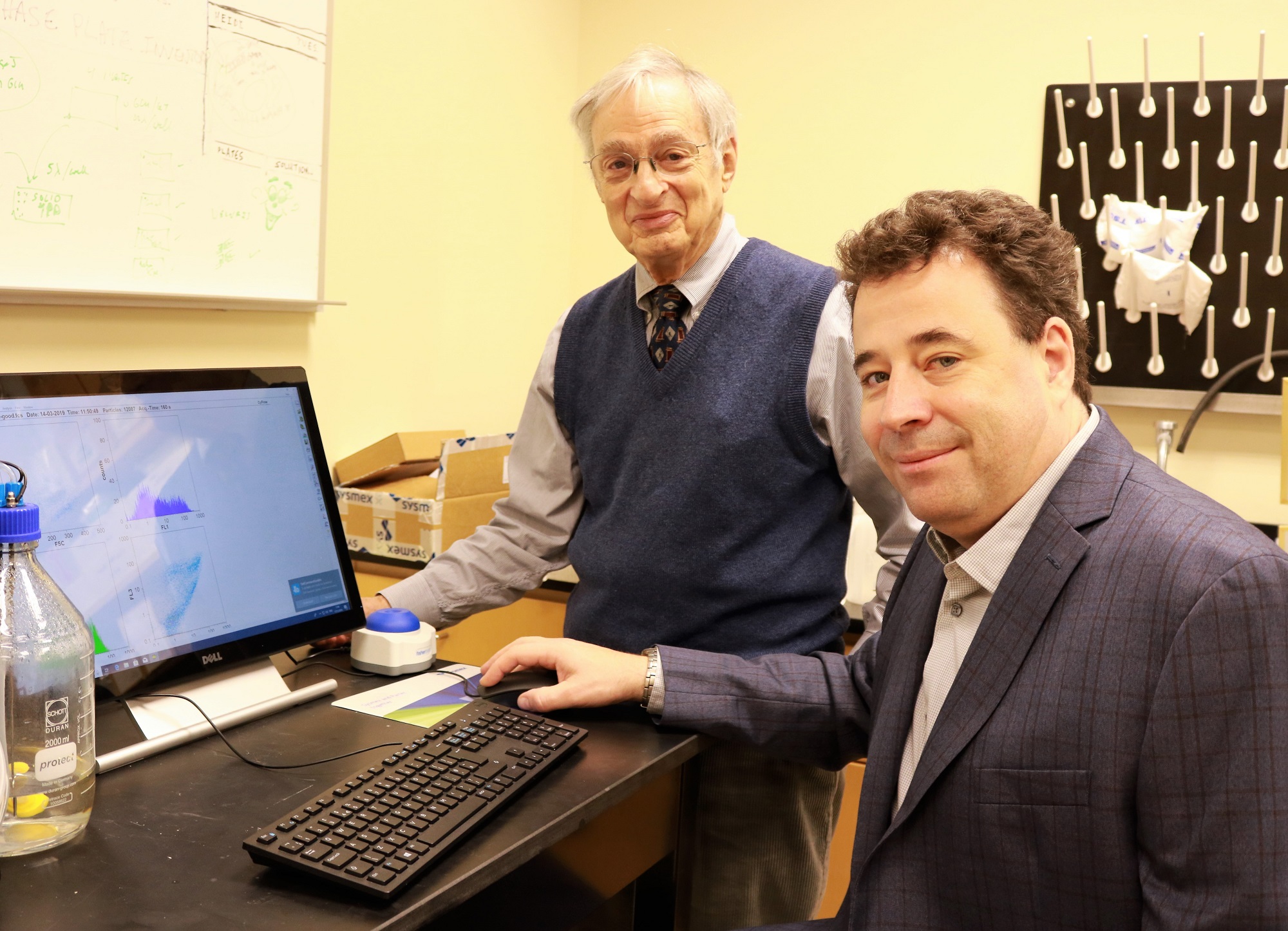
Two researchers from the Wayne State University School of Medicine have contributed a key factor to a study that may lead to potential new targets for treatment of pulmonary hypertension.
Professor of Molecular Medicine and Genetics and of Biochemistry, Microbiology and Immunology and Division Director for Research Maik Huttemann, Ph.D., and the Henry L. Brasza Professor of
Molecular Medicine and Genetics and Director of the Center for Molecular Medicine and Genetics Lawrence Grossman, Ph.D., supplied the genetic model that allowed one of the genes to be identified.
“Acute O2 sensing through HIF2a-dependent expression of atypical cytochrome oxidase subunits in arterial chemoreceptors,” published in Science Signaling Dec. 17, provides a mechanistic explanation for the acute oxygen regulation of breathing and outlines the unanticipated role of several genes.
“This work is related to another high profile paper Dr. Hüttemann and I were involved in several years ago that provided a mechanism for oxygen sensing in the lung during acute hypoxia,” Dr. Grossman said.
When there is hypoxia in a tissue, blood vessels normally dilate to allow more blood to flow to help oxygenate the tissue.
“However, a contrary need exists in the lung since the idea is to oxygenate blood for distribution to the rest of the body,” Dr. Huttemann added. “Therefore, in the lung, blood is directed away from hypoxic areas. This is called hypoxic pulmonary vasoconstriction, or HPV. We and our collaborators in Germany showed that a gene we had knocked out was absolutely required for HPV.”
Oxygen deficiency, or hypoxia, is a crucial physiological mechanism and a feature of many diseases. Acute oxygen sensing is especially important to the most oxygen-utilizing organ, the brain, which can only avoid damage from oxygen deprivation for minutes. Adaptive responses such as hyperventilation and alteration of metabolism occur within seconds.
“The classical organ that regulates response to hypoxia is the carotid body, a small cluster of chemoreceptor cells in the bifurcation (fork) of the common carotid artery, which runs along both sides of the neck. Signaling changes in oxygen tension is known to involve potassium channels whose inhibition by hypoxia leads to transmitter release and activation of nerve fibers terminating in the brainstem respiratory center,” Dr. Huttemann said. “However, the mechanism of this sensing has not been known. We have identified several genes required for the response, providing a mechanistic explanation for the acute oxygen regulation of breathing.”